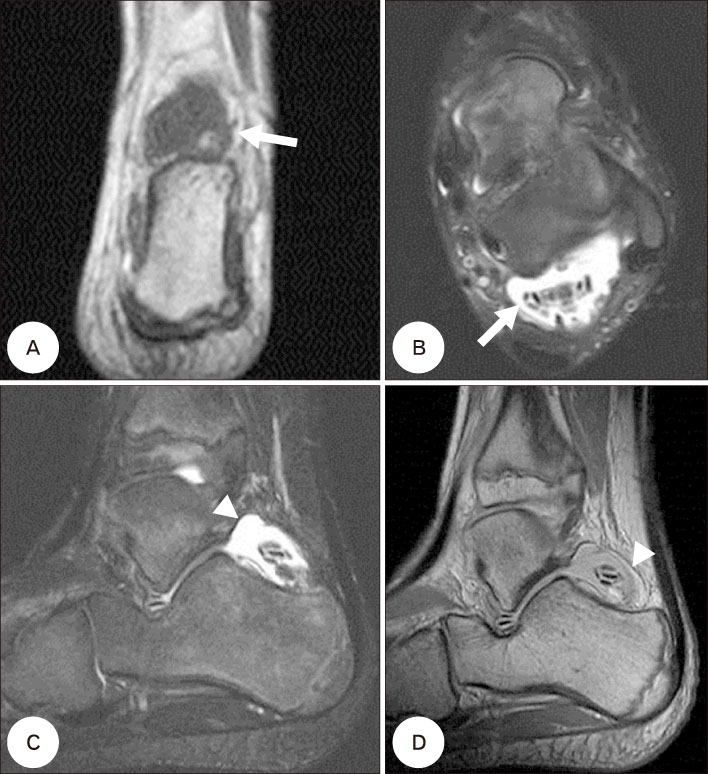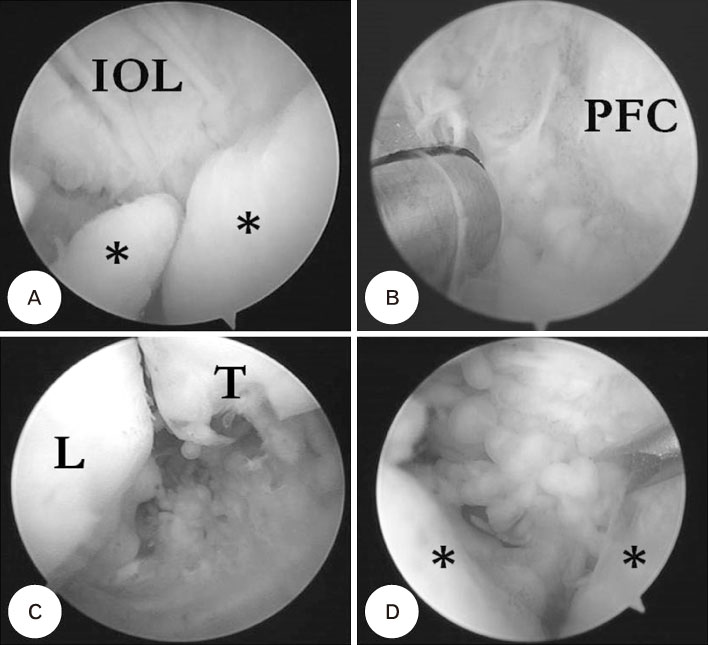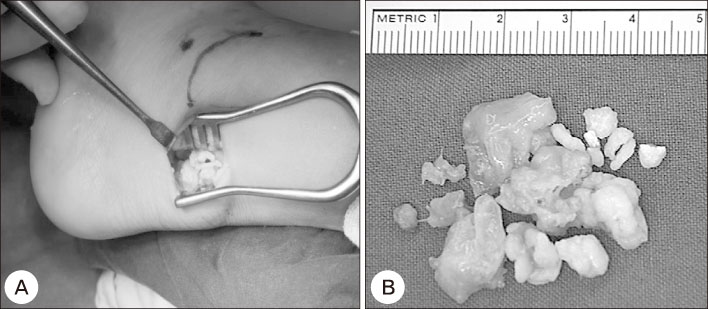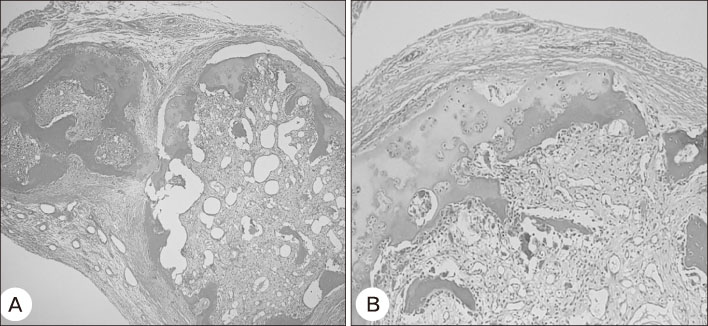Korean J Sports Med.
2018 Dec;36(4):221-226. 10.5763/kjsm.2018.36.4.221.
Synovial Osteochondromatosis of the Subtalar Joint in an Adolescent Baseball Player
- Affiliations
-
- 1Department of Orthopaedic Surgery, Good Samsun Hospital, Busan, Korea. oyong79@naver.com
- KMID: 2428006
- DOI: http://doi.org/10.5763/kjsm.2018.36.4.221
Abstract
- Synovial chondromatosis is an uncommon disorder characterized by cartilaginous proliferation within the synovial membrane of the articular joint. Smaller joints are rarely affected and it may be progressed to osteochondromatosis after ossification or calcification of metaplastic cartilage. It is commonly presented in the third to fourth decade of life, but rarely presented in adolescence. We report a unique case of synovial osteochondromatosis of the subtalar joint in 14-year-old baseball player. Arthroscopic removal of loose body and complete excision of the osteochondral mass with concomitant synovectomy resulted in satisfactory outcome without recurrence at final follow-up.
MeSH Terms
Figure
Reference
-
1. Jacob RA, Campbell WP, Niemann KM. Synovial chondrometaplasia: a case report. Clin Orthop Relat Res. 1975; (109):152–154.2. Maurice H, Crone M, Watt I. Synovial chondromatosis. J Bone Joint Surg Br. 1988; 70:807–811.
Article3. Kim JB, Song IS, Shin SY, Yoon JY. Primary synovial chondromatosis of the talonavicular joint: a case report. Foot Ankle Surg. 2016; 22:e25–e28.
Article4. Suh JS, Kim JH, Kim JI, Kim HS. Synovial chondromatosis of the Ankle Joint. J Korean Foot Ankle Soc. 2009; 13:14–18.5. Hocking R, Negrine J. Primary synovial chondromatosis of the subtalar joint affecting two brothers. Foot Ankle Int. 2003; 24:865–867.
Article6. Milgram JW. Synovial osteochondromatosis: a histopathological study of thirty cases. J Bone Joint Surg Am. 1977; 59:792–801.7. Hsueh CJ, Huang GS, Juan CJ, et al. Synovial chondroma of the ankle in a young child after recent trauma: CT and MR features. Clin Imaging. 2001; 25:296–299.
Article8. Hentges MJ, Lee MS. Chronic ankle and subtalar joint instability in the athlete. Clin Podiatr Med Surg. 2011; 28:87–104.
Article9. Kadakia AP, Sarkar J. Osteochondritis dissecans of the talus involving the subtalar joint: a case report. J Foot Ankle Surg. 2007; 46:488–492.
Article10. Samson L, Mazurkiewicz S, Treder M, Wisniewski P. Outcome in the arthroscopic treatment of synovial chondromatosis of the knee. Ortop Traumatol Rehabil. 2005; 7:391–396.
- Full Text Links
- Actions
-
Cited
- CITED
-
- Close
- Share
- Similar articles
-
- Primary Synovial Osteochondromatosis: A case report
- Nonunion of a Stress Fracture Through the Olecranon Epiphyseal Plate in an Adolescent Judo Player: A Case Report
- Intraarticular Osteochondromatosis of the Ankle Joint: A Case Report
- Synovial Osteochondromatosis Misdiagnosed as Simple Osteoarthritis of the Knee Joint
- A Case of Hereditary Multiple Osteochondromatosis







